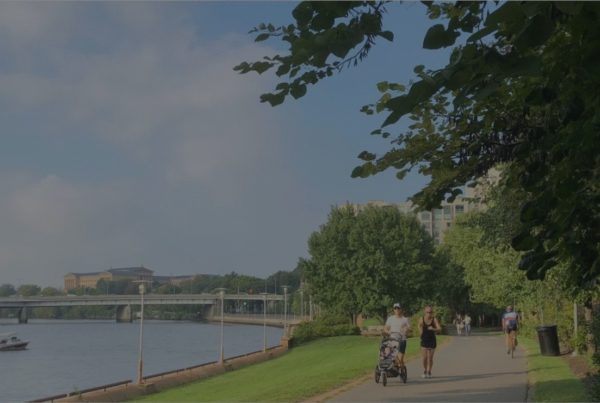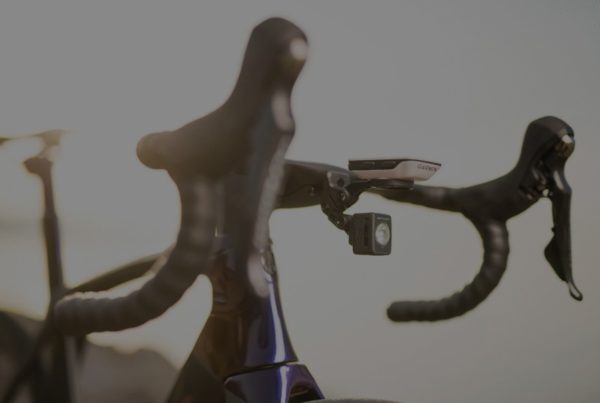Bob Mionske explains why lights are an important accessory to bring on fall rides for safety and to shield yourself from liability.
Another summer has come and gone, and another fall has arrived. With season barely over, roadies are still summer-fit and still getting long rides in after work. But although the weather is warm, days are getting shorter, and the nights are getting longer. This combination of long rides and shorter days means there’s a real possibility of getting caught in the dark at the end of your after-work ride.
While it may be obvious to seasoned roadies, lights are now a necessity on rides. The main function of lights is to help drivers see you. From that perspective, lights are an extremely important safety device for helping to prevent serious bodily injury, or worse. If you want to increase the odds of drivers seeing you, they are a good idea at any time of day.
But lights do more than protect your body from injury; they also protect you legally. If a cyclist is riding without lights, and there is a collision, the cyclist will get the blame. If this happens, it may be very, very difficult for the injured cyclist to get the driver’s insurance company to pay for the cyclist’s injuries, even if the driver was clearly negligent and caused the collision. To make matters worse, if the cyclist is determined to be at fault, it’s very common for law enforcement to show up in the hospital room to ticket the injured cyclist, and it’s becoming increasingly common for insurance companies to present the injured cyclist with a bill for damages to the driver’s car. You may even incur liability for causing other vehicles to collide as they attempted to avoid you.
But if the cyclist was riding with lights and there was a collision anyway, the cyclist has some legal protection — nobody can say that the cyclist caused the collision by not having lights. Of course, there may be other legal issues (either real or imaginary) involved in a collision, but riding with lights is one of the easiest things you can do to shield yourself legally. And if the driver was at fault, taking the precaution of riding with lights means you can keep the insurance company focused on compensating you for your injuries, instead of allowing them to shift the blame to you.
The exact requirements for lighting will vary by state, but all require lights, and there are some general rules that are common across all states. Generally, states require a white front light; rear lights are not required, but are allowed. But if you do ride with a rear light, it’s required to be red. Some rear lights even have a red reflector incorporated into the light. Although a rear light is not required by law, it is required by common sense for safety.
Your state’s law allows you to have more lights than the law requires, but not less, and your lights can be brighter than what the law requires, but they cannot be less-bright than what the law requires. You might even want to consider keeping an extra, small blinking light on board for emergencies, low-light situations, and if you’re accidentally caught out late.
We usually think of lights as being required at night, but they are actually required at any time when visibility is so reduced that it is difficult to clearly discern a person or vehicle at a distance of 1,000 feet. This “period of darkness” includes night and twilight, but it also includes any other time of reduced visibility — when there’s fog, for example, or during a heavy rain, or during a blizzard. If you are out riding in conditions where visibility is reduced, a good rule of thumb to follow is this: If you were driving in these conditions, would you have your lights on? If so, you should have them on during your ride as well.
This article, Autumn Lights, was originally published on VeloNews on October 3, 2015.
Now read the fine print:
Bob Mionske is a former competitive cyclist who represented the U.S. at the 1988 Olympic Games (where he finished fourth in the road race), the 1992 Olympics, as well as winning the 1990 national championship road race.
After retiring from racing in 1993, he coached the Saturn Professional Cycling team for one year before heading off to law school. Mionske’s practice is now split between personal-injury work, representing professional athletes as an agent and other legal issues facing endurance athletes (traffic violations, contract, criminal charges, intellectual property, etc.).
Mionske is also the author of “Bicycling and the Law,” designed to be the primary resource for cyclists to consult when faced with a legal question. It provides readers with the knowledge to avoid many legal problems in the first place, and informs them of their rights, their responsibilities, and what steps they can take if they do encounter a legal problem. If you have a cycling-related legal question please send it to Bob, and he will answer as many of these questions privately as he can. He will also select a few questions to answer in this column. General bicycle-accident advice can be found at bicyclelaw.com.
Important notice:
The information provided in the “Legally Speaking” column is not legal advice. The information provided on this public website is provided solely for the general interest of the visitors to this website. The information contained in the column applies to general principles of American jurisprudence and may not reflect current legal developments or statutory changes in the various jurisdictions and therefore should not be relied upon or interpreted as legal advice. Understand that reading the information contained in this column does not mean you have established an attorney-client relationship with attorney Bob Mionske. Readers of this column should not act upon any information contained in the website without first seeking the advice of legal counsel.
© Bob Mionske 2015. All Rights Reserved.




